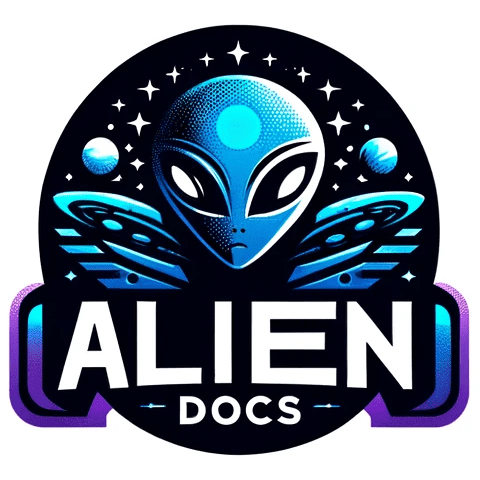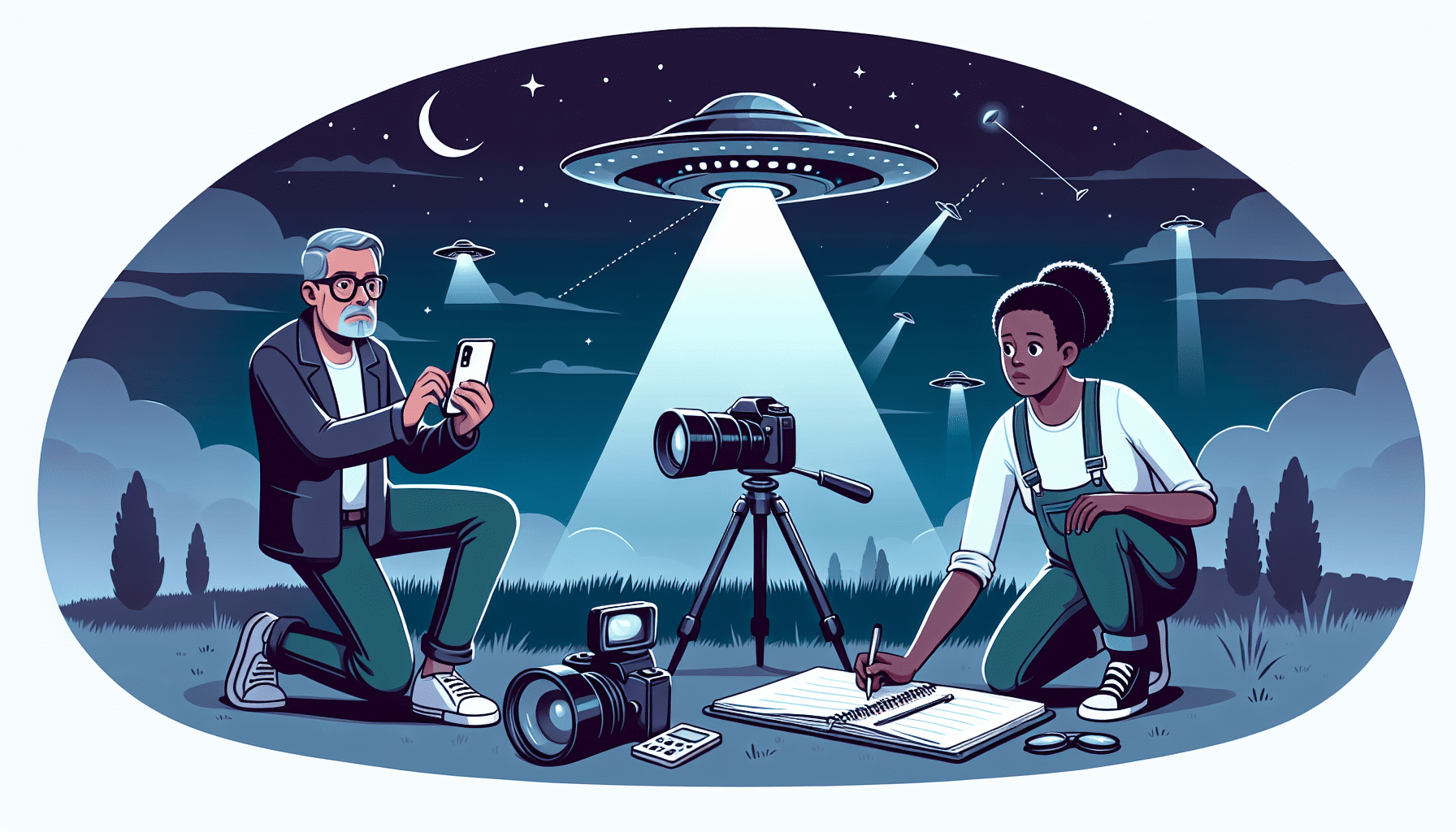You’ve just experienced a jaw-dropping encounter with a UFO, and now you’re eager to capture the moment and preserve it for future generations to wonder at. Whether you were lucky enough to capture a clear photograph or only managed to snap a quick blurry shot, this article will guide you through the best ways to document a UFO sighting. From tips on camera settings to advice on gathering witness testimonies, you’ll discover the essential tools and techniques to ensure your extraordinary encounter stands as a testament to the enigmatic mysteries of the universe. So, grab your camera and get ready to unlock the secrets of capturing the unexplained.
1. Choose the Right Equipment
When documenting a UFO sighting, it is crucial to have the right equipment in order to capture clear and high-quality evidence. Considering the type of equipment you use is the first step. While smartphones can capture decent photos and videos, it is advisable to opt for high-quality cameras for the best results. Cameras with higher resolution and better zoom capabilities will allow you to capture more detailed images of the unidentified flying object.
Another important aspect of choosing the right equipment is stability. UFO sightings can be brief and unpredictable, so using a tripod can greatly help in keeping your camera steady. A tripod will minimize camera shake and ensure that your photos and videos are sharp and clear.
2. Familiarize Yourself with the Camera Settings
To maximize your chances of capturing the best possible evidence, it is essential to familiarize yourself with the camera settings. Understanding concepts such as ISO, aperture, and shutter speed will allow you to adapt to different lighting conditions and capture clear photos even in challenging situations.
ISO determines the sensitivity of your camera’s image sensor to light. In low light conditions, you can increase the ISO to capture brighter images, but be cautious as higher ISO settings can introduce noise. Aperture controls the amount of light that enters the camera through the lens. Adjusting the aperture will affect the depth of field, allowing you to focus on the UFO while blurring the background if desired. Shutter speed determines the length of time the camera’s sensor is exposed to light. A faster shutter speed can freeze motion, making it ideal for capturing fast-moving UFOs.
It is essential to practice adjusting these settings in different lighting conditions before encountering a UFO sighting. By doing so, you will become more comfortable and efficient in making quick adjustments to capture the best possible shots.
3. Capture Clear Photos
When documenting a UFO sighting, capturing clear photos is of utmost importance. Blurry or low-quality images may not provide sufficient evidence or may be dismissed as inconclusive. Here are some tips to ensure your photos are clear and detailed.
Firstly, clean the camera lens. Dust, fingerprints, or smudges on the lens can significantly degrade the quality of your photos. Use a microfiber cloth or lens cleaning solution to remove any dirt, ensuring your lens is pristine before capturing the UFO.
Hold the camera steady while taking photos. Camera shake can result in blurry images, so maintain a firm grip on the camera and try to keep your body as still as possible. If you’re using a tripod, make sure it is set up correctly and adjust its height and position for optimal framing.
When capturing the UFO, zoom in and focus on the object. This will allow you to capture more details and make it easier to analyze the evidence later. Experiment with different zoom levels to find the right balance between close-up shots and maintaining a wider field of view to provide context.

4. Record High-Quality Videos
While photos are valuable in documenting a UFO sighting, videos can capture additional details such as the movement and behavior of the object. Here are some tips to record high-quality videos of UFO sightings.
Make sure your camera is in video mode instead of photo mode. This will ensure that you capture the UFO in motion rather than a series of static images. Check your camera’s settings to ensure that the video resolution and frame rate are set to the highest possible quality, as this will provide clearer footage.
When filming, try to hold the camera horizontally. This format is more commonly used for video playback and provides a better viewing experience for both researchers and the general public. Horizontal footage also allows for a wider field of view, capturing more of the surroundings and potentially revealing additional information about the sighting.
To avoid shaky footage, minimize excessive camera movements and sudden changes in direction. Smooth panning and steady tracking shots can help capture the UFO’s movement without distracting camera shake. Consider using a tripod or stabilizing equipment to further enhance the stability of your video recordings.
5. Take Detailed Notes
In addition to capturing visual evidence, taking detailed notes about the UFO sighting can provide valuable context and additional information. Here are some key details you should include in your notes:
- Note the date, time, and location of the sighting. This information will help researchers analyze patterns and correlations between sightings.
- Describe the surroundings and weather conditions at the time of the sighting. Documenting factors such as cloud coverage, wind speed, and visibility can provide insights into how these factors may have influenced the sighting.
- Record the duration and behavior of the UFO. Note the direction of movement, speed, and any unusual maneuvers. Describing the UFO’s shape, color, and any distinct features can also be helpful.
By documenting these details, you can provide a comprehensive account of the UFO sighting, which will aid in future analysis and research.
6. Obtain Multiple Perspectives
To ensure the credibility and thoroughness of your documentation, it is essential to obtain multiple perspectives of the UFO sighting. Encouraging witnesses to document their own observations will provide a broader range of evidence to analyze. Here are some ways to obtain multiple perspectives:
- Encourage witnesses to capture their own videos or photos of the sighting. This can be done through sharing information online or reaching out to local communities who may have witnessed similar events.
- Collect videos or photos from different angles. If multiple witnesses managed to capture the event, analyze their footage in conjunction with your own. Different perspectives may reveal new details or offer alternative viewpoints on the sighting.
- Interview eyewitnesses for additional information. Speaking directly with those who witnessed the UFO can provide valuable insights into their experiences. Ask about their vantage point, what stood out to them, and any other relevant details they may remember.
By gathering multiple perspectives, you can establish a more robust body of evidence, thereby increasing the credibility and significance of your documentation.
7. Avoid Hoaxes and Misidentification
Documenting a UFO sighting requires critical thinking and careful consideration to avoid hoaxes or misidentifications. While many UFO sightings turn out to have rational explanations, it is important to eliminate possible explanations and remain skeptical until credible evidence is obtained. Here is how you can avoid hoaxes and misidentifications:
- Eliminate possible explanations by investigating known aircraft, weather phenomena, or astronomical events that could explain the sighting. Consult local aviation authorities or meteorological services to determine if any scheduled flights or natural occurrences coincided with the sighting.
- Rule out common objects or phenomena. Sometimes, everyday objects like drones, balloons, or even birds can be mistaken for UFOs. Assess the characteristics of the object closely and consider alternative possibilities before concluding it is an unidentified object.
- Be skeptical and rational when analyzing the evidence. Assess the credibility and reliability of the witnesses, their footage, and other supporting information. Look for inconsistencies or potential motives that may cast doubt on the authenticity of the sighting.
By following a methodical approach and using critical thinking, you can avoid being misled by hoaxes or misidentifications, ensuring that your documentation remains credible and reliable.
8. Preserve the Evidence
Preserving the evidence of a UFO sighting is vital to ensure its integrity and availability for future analysis. Here are some steps to take to preserve your evidence effectively:
- Save the original, unedited files of your photos and videos. Keeping the original files ensures that the untouched evidence is accessible for experts to analyze without any alterations or compression artifacts.
- Create backups of the files in multiple locations. Consider storing copies of the evidence on external hard drives, cloud storage services, or other secure platforms. This safeguards against accidental loss or damage of the original files.
- Share your evidence with trusted researchers. Collaborating with reputable UFO organizations or individual experts in the field allows for further analysis and verification of your documentation. Sharing your evidence with trusted researchers ensures it reaches the appropriate audience for consideration and study.
By taking these steps, you can preserve the integrity of your evidence and contribute to the collective knowledge surrounding UFO sightings.
9. Report the Sighting
Reporting your UFO sighting to the appropriate organizations and agencies is instrumental in contributing to the overall understanding of these phenomena. Here are a few avenues through which you can report your sighting:
- Contact reputable UFO organizations. There are numerous organizations dedicated to the study and investigation of UFO sightings. Reach out to well-established organizations, such as the Mutual UFO Network (MUFON) or the National UFO Reporting Center (NUFORC), to submit a detailed report of your sighting.
- Submit reports to government agencies. Many countries have agencies or departments that collect and analyze UFO sightings. Find the appropriate agency in your country and submit a formal report. This helps ensure that your sighting is included in official records and can potentially contribute to national or international studies.
- Share the experience with online communities. Online platforms and forums dedicated to UFO investigations provide spaces for individuals to share their experiences and contribute to ongoing discussions. By participating in these communities, you can connect with like-minded individuals and potentially gain insights or additional information regarding your sighting.
Reporting your sighting increases the visibility and reach of your documentation, enabling researchers and enthusiasts alike to access and analyze your evidence more effectively.
10. Seek Professional Analysis
For a more thorough understanding of your UFO sighting, seeking professional analysis from experts in the field is highly beneficial. These experts can offer valuable insights into the evidence you have collected and help assess its significance. Here’s how you can seek professional analysis:
- Consult experts in the field. Reach out to renowned UFO researchers or organizations and inquire about their analysis services. These experts often have extensive knowledge and experience in analyzing UFO evidence and can provide valuable interpretations or explanations.
- Request analysis of the evidence. Submit your documentation to experts for a detailed analysis. This may include examining the photographs or videos for anomalies, consulting databases of similar sightings, or employing specialized techniques to identify potential digital manipulations or other artifacts.
- Collaborate with other researchers. Engage in discussions and collaborations with other researchers who are interested in studying UFO sightings. By pooling resources and knowledge, you can contribute to a collective effort in analyzing and understanding these phenomena.
Seeking professional analysis not only enhances the credibility and significance of your documentation but also contributes to the broader scientific inquiry into UFO sightings.
In conclusion, documenting a UFO sighting requires careful preparation, attention to detail, and critical analysis. By choosing the right equipment, familiarizing yourself with camera settings, capturing clear photos and high-quality videos, taking detailed notes, obtaining multiple perspectives, avoiding hoaxes and misidentification, preserving the evidence, reporting the sighting, and seeking professional analysis, you can maximize the impact and scientific value of your documentation. Remember, every sighting adds to our collective knowledge, and your careful and comprehensive approach will contribute to a better understanding of these mysterious aerial phenomena.

